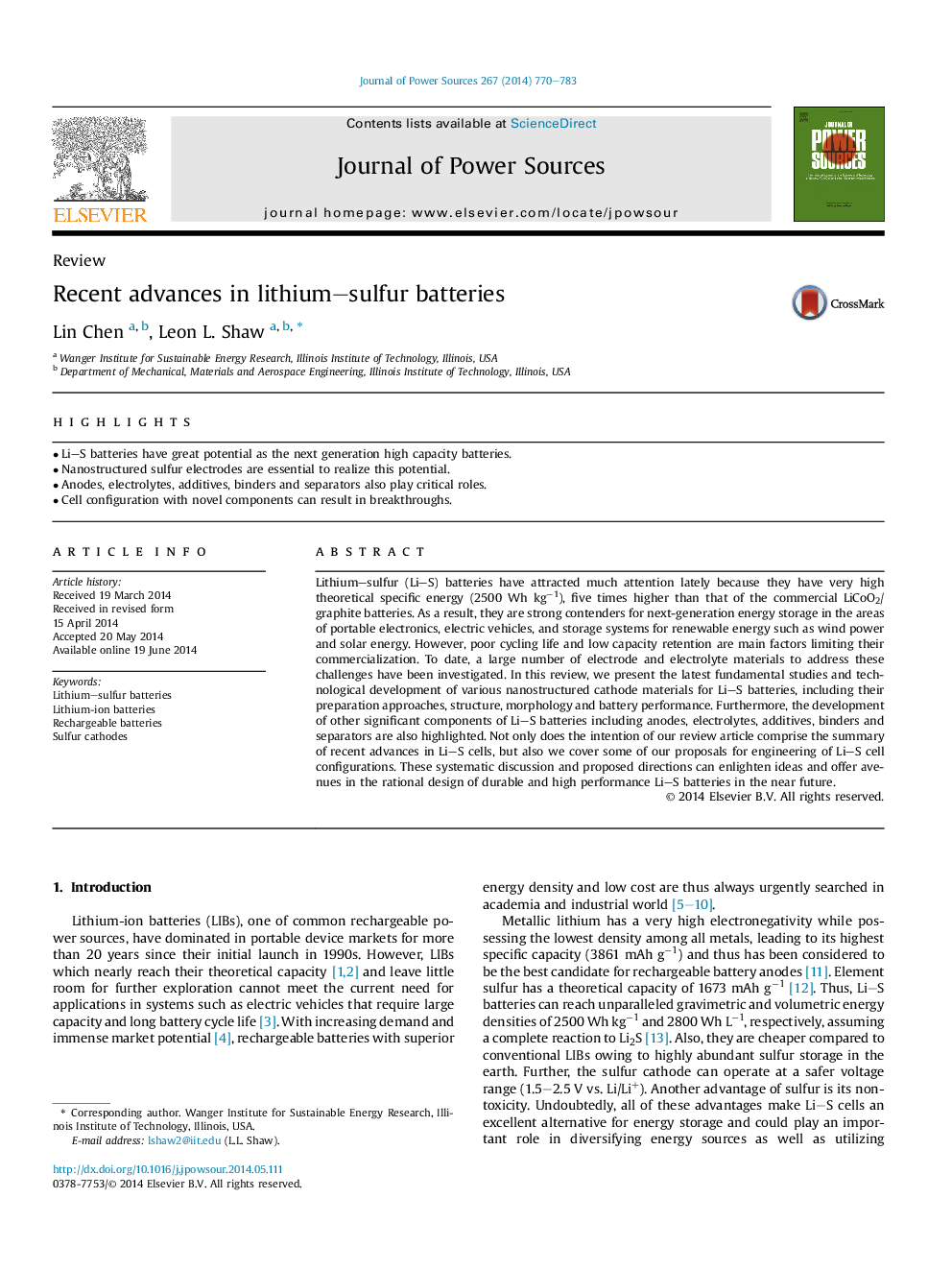| Article ID | Journal | Published Year | Pages | File Type |
|---|---|---|---|---|
| 1286568 | Journal of Power Sources | 2014 | 14 Pages |
•Li–S batteries have great potential as the next generation high capacity batteries.•Nanostructured sulfur electrodes are essential to realize this potential.•Anodes, electrolytes, additives, binders and separators also play critical roles.•Cell configuration with novel components can result in breakthroughs.
Lithium–sulfur (Li–S) batteries have attracted much attention lately because they have very high theoretical specific energy (2500 Wh kg−1), five times higher than that of the commercial LiCoO2/graphite batteries. As a result, they are strong contenders for next-generation energy storage in the areas of portable electronics, electric vehicles, and storage systems for renewable energy such as wind power and solar energy. However, poor cycling life and low capacity retention are main factors limiting their commercialization. To date, a large number of electrode and electrolyte materials to address these challenges have been investigated. In this review, we present the latest fundamental studies and technological development of various nanostructured cathode materials for Li–S batteries, including their preparation approaches, structure, morphology and battery performance. Furthermore, the development of other significant components of Li–S batteries including anodes, electrolytes, additives, binders and separators are also highlighted. Not only does the intention of our review article comprise the summary of recent advances in Li–S cells, but also we cover some of our proposals for engineering of Li–S cell configurations. These systematic discussion and proposed directions can enlighten ideas and offer avenues in the rational design of durable and high performance Li–S batteries in the near future.
